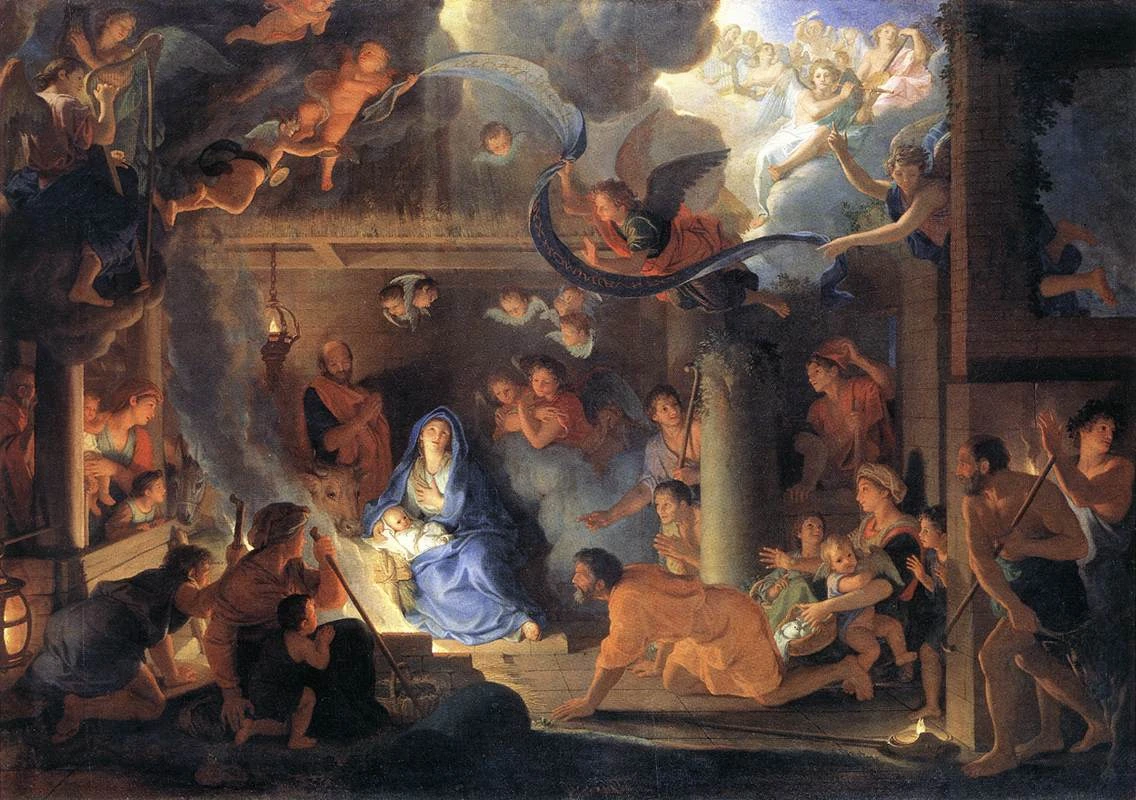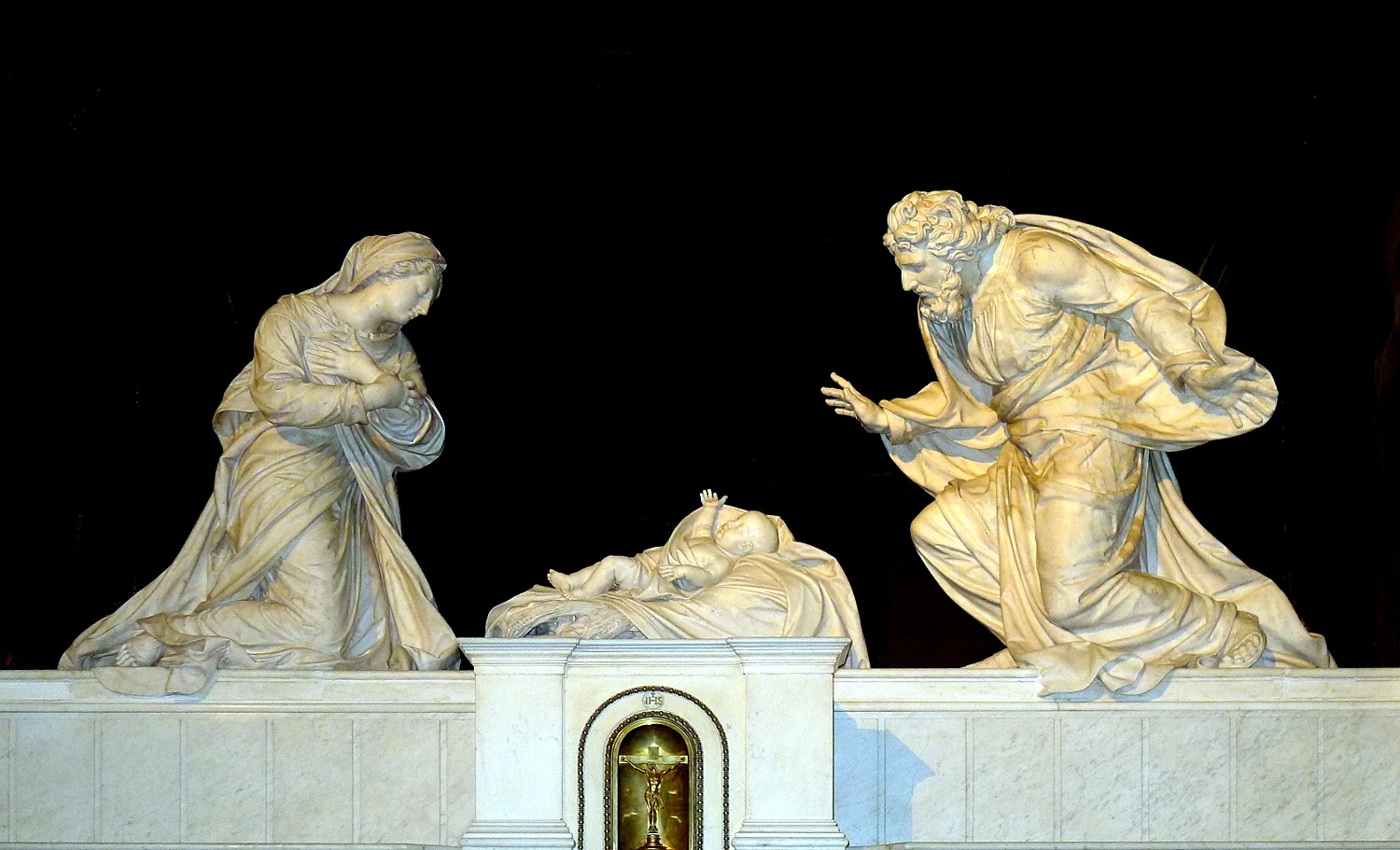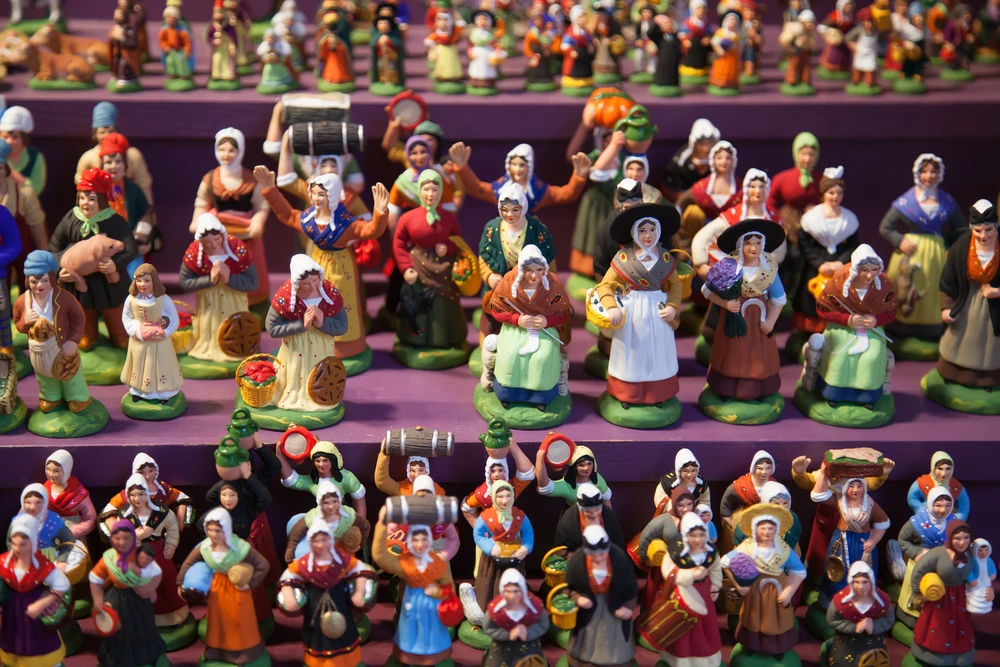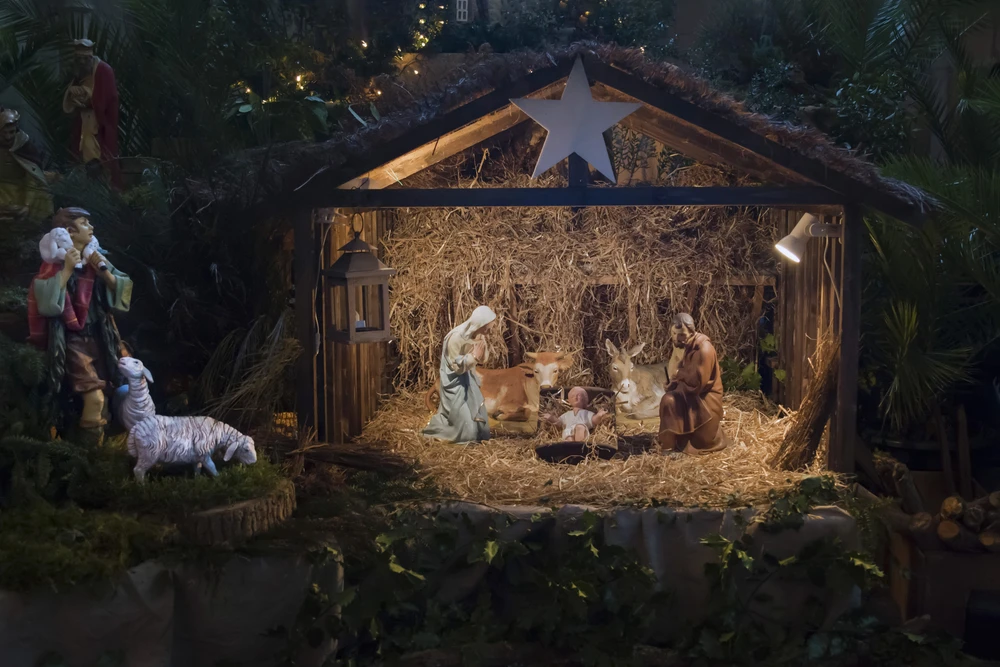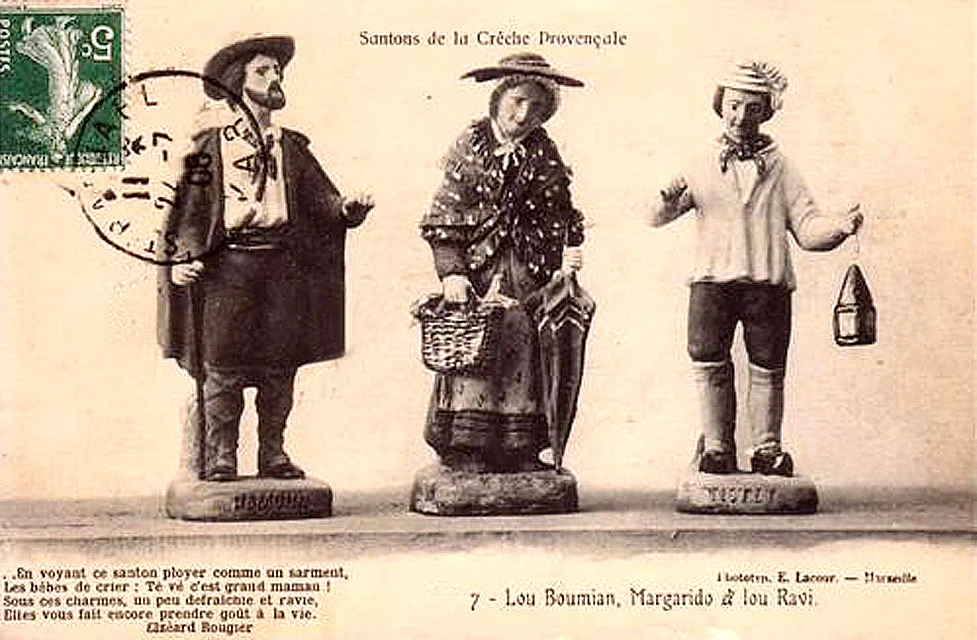There may be some mistranslations. It's "lou ravi" who did the work and he's a bit of a simpleton...
Summary of what you will read
This article explains the origin of the nativity scene, who created it, what it symbolizes and how it became a central Christmas tradition in many countries.
What is the origin of the nativity scene?
The origin of the nativity scene dates back to the Middle Ages. It is inspired by the biblical accounts of the birth of Jesus described in the Gospels. Early representations of the Nativity appeared in churches as visual tools to explain the Christian story to people who could not read.
The representation of the Nativity
The Nativity painted by Charles LE BRUN in 1665. Musée du Louvre, Paris. Source : wikicommons.
If we consider that a nativity scene is a representation of the Nativity of Christ, then the oldest ones are almost 2000 years old, having been found in the catacombs of Italy. In France, Nativity scenes are regularly found in churches, whether in the form of frescoes or stained glass windows, as in Chartres, or in paintings such as the one by Charles LE BRUN (1619-1690), Louis XIV's favorite painter, which can be seen in the Louvre Museum in Paris. Some are magnificent, such as the Nativity in the Church of Saint Roch du Val de Grace in Paris. Sculpted in 1665 by Michel ANGUIER (1612-1686).
Michel ANGUIER's depiction of the Nativity. Illustration chosen by monsieurdefrance.com: By Mbzt - Own work, CC BY-SA 3.0, https://commons.wikimedia.org/w/index.php?curid=12757451
The Middle Ages and the appearance of cribs
In the Middle Ages, people enjoyed discovering "mysteries". These were large-scale public performances, often staged in front of churches, depicting great episodes from the Bible. The Nativity was one of the most popular. The nativity scene comes later. The word crib comes from the Old Francique "kryptia" meaning manger. It is said that it was Saint Francis of Assisi (whose mother was from Tarascon in France) who first had the idea of a living crib, in other words, to represent the Nativity with living figures, including the baby, the donkey and the ox. The world's oldest monumental nativity scene is located in Füssen, Bavaria, Germany. It dates back to the 13th century. In Italy, there's the Basilica of Santa Maria Maggiore in Rome, dating from the same period. It was around Naples that the first, smaller cribs appeared for Christmas celebrations. They were first found in churches, then in large families. In France, nativity scenes first appeared in churches in Provence in the 16th century.
The French Revolution and cribs at home.
During the French Revolution, when many churches were closed and worship was forbidden, many private individuals made small cribs in breadcrumbs or wax, sometimes in clay, which were discreetly installed in their homes. After the Revolution, the tradition continued, even when nativity scenes made a comeback in French churches. There are typical cribs in certain French regions, such as the well-known Provençal crib with its santons, representing a Provençal village with its typical characters, not only Joseph, Mary and Jesus... Mausi also depicts a Provencal village, often from the 19th century, with its craftsmen, its mill, its little streets... There are also Franc-Comtois nativity scenes.
Provencal crib figures. Photo chosen by monsieurdefrance.com: depositphotos
What do we put in the crèche?
The minimum is Mary, Joseph and the manger, in which the baby Jesus will be placed on the evening of December 24. Around them are the donkey and the ox , whose breath is said to warm the newborn. Mary is often depicted kneeling and Joseph standing. We can also add the shepherds and their sheep. Angels are often depicted. A star is placed at the top of the crib to remind us that this star guided the Magi to the manger. A few days after Christmas, the three Wise Men are installed. In many cribs, especially in Provence, houses with craftsmen, animals (chickens, dogs...) and more recent figures such as the mayor, the teacher... are added. The crib remains in place at least until Epiphany, on January 5. But tradition dictates that it remains in place until February 2: the day of the presentation of the Christ Child in the Temple.
A typical crib. Photo chosen by Monsieurdefrance.com: Yay images via depositphotos.
The most beautiful cribs in France
Provence takes the lion's share, with the largest Provencal crib in Grignan (Drôme). The most typical is in Les Baux de Provence (Bouches du Rhône), where one of the Magi, Balthazar, is said to have settled and had descendants. There's also one in Saintes Maries de la Mer and Avignon. In Alsace, the nativity scene at Strasbourg Cathedral is truly magical. And in this region, you can discover a "crib trail ". There are 3 different itineraries, from Altkirch to Lauterbourg. There's also the village of Bergheim, with its many open-air cribs. Notre Dame de Paris has been France's most visited nativity scene for years. We'll probably see it again after the renovation. In Normandy, Lisieux (Calvados) presents over 250 cribs from all over the world .
Focus on the Provençal crib
Some typical Provencal crib characters, such as lou ravi, the village idiot. Illustration chosen by monsieurdefrance.com: F. Latour, Marseille, Public domain, via Wikimedia Commons
In a Provençal crib, you'll obviously see the same things as in "classic" cribs: Mary, Joseph, baby Jesus, the donkey and the ox. But we also see dozens of shepherds , chatting, working, sharpening their scythes. We also see chickens, geese, and Provencal houses all around, with their white stone walls and red tile roofs. There'salso the angel Boufaréu, with his trumpet, calling everyone together. There's also the hunter, the miller, the baker, the grinder, the fisherman and the chimney sweep. There's also the washerwoman and the fishmonger. You also have to see the mayor (Lou consoul). And then there are the bohemians (le boumian et la boumiane) and, not far away, a farandole of dancers, the arlésienne (on horseback), the pétanque player (nicknamed sardine), the Margarido (sitting on a donkey next to her husband), lou Pistachier (the little peasant), the blind man, his son, the Tambourinaire, and above all the ravi de la crèche with his arms spread wide and literally amazed because he can see (by extension, when we say someone is the ravi de la crèche, it's because he's a bit simple and easy to amaze). At a deeper level, the ravi is a pure-hearted boy whose joy is beyond calculation in the face of Christmas joy. We can add the priest, the vicar, the monk, the"Ravida" (the female version of the ravi), the simpleton, the two old men (Grasset and Grassette), and in the distance we see the Three W ise Men and their cohort of camels, dromedaries and servants arrive.
FAQ – Nativity Scene History
Who created the first nativity scene?
The first nativity scene is credited to Saint Francis of Assisi in 1223. He organized a living nativity in Italy to make the story of Christmas easier to understand.
What is the origin of the nativity scene?
The nativity scene originates in the Middle Ages. It developed from biblical stories of the birth of Jesus and early visual representations used in churches.
What does the nativity scene symbolize?
The nativity scene symbolizes humility, hope and the birth of Jesus. It highlights simplicity, faith and the shared meaning of Christmas.
When did nativity scenes become popular?
Nativity scenes became popular in Europe from the 13th century onward. They spread from churches to homes over several centuries.
Why do people set up a nativity scene at Christmas?
People set up a nativity scene to represent the birth of Jesus and continue a long-standing Christmas tradition. It marks the spiritual and cultural meaning of the holiday.

